Three religious buildings represent the rebirth of Christianity in Great Britain: St. Augustine's Abbey, Canterbury Cathedral and St. Martin's Church. St. Augustine's Abbey was founded by the Benedictine monk Augustine of Canterbury in 597. The king of Kent allowed Augustine to build the abbey just outside the city walls of Canterbury. St. Augustine's Abbey was built on the site of three Anglo-Saxon churches and was rebuilt during the Norman conquest of England. St. Augustine's Abbey was destroyed during the Dissolution of the monasteries by Henry VIII of England in the 16th century. Now, only the ruins remain. The ruins includes the remains of the Church of St. Pancras and the monastery were the kings of Kent, the first archbishops and the monk Augustine of Canterbury were buried. The Great Gate of St. Augustine's Abbey was built between 1297-1309, the Great Gate still survives. St. Augustine's Abbey is part of the UNESCO World Heritage Site: Canterbury Cathedral, St. Augustine's Abbey and St. Martin's Church. The three great monuments gained the status as a UNESCO World Heritage in 1988.
www.werelderfgoedfotos.nl © Copyright World Heritage Photos Classic Car Road Trip
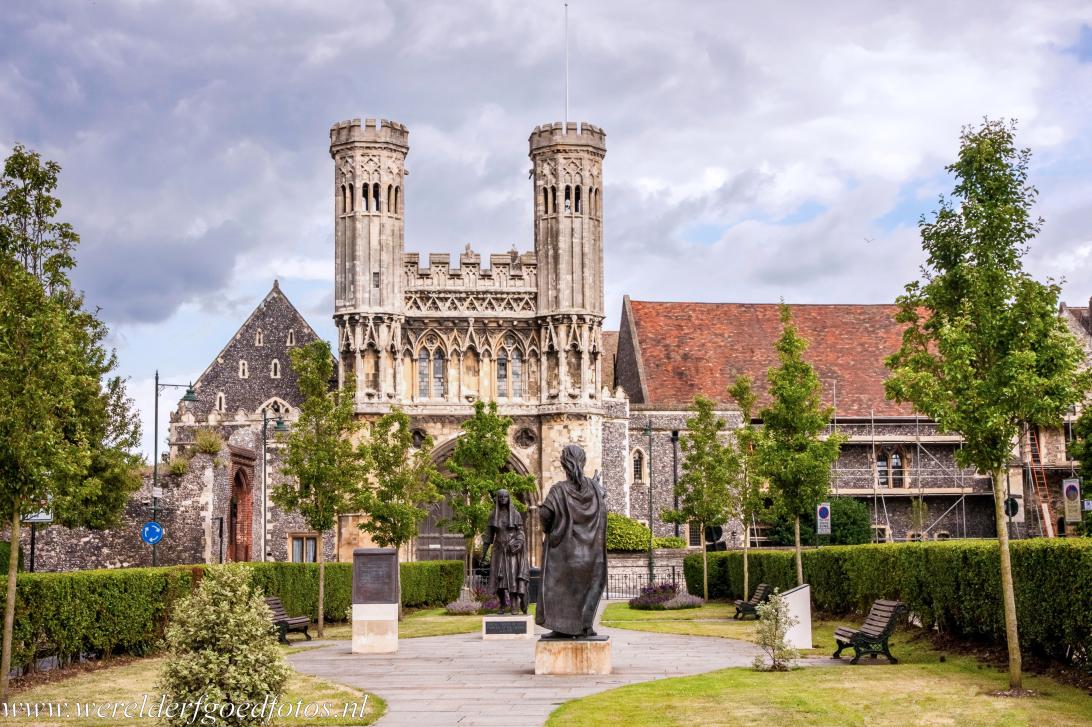
The Great Gate or Fyndon's Gate of St. Augustine's Abbey in Canterbury was built from 1297 to 1309. Three important religious buildings in Canterbury represent the rebirth of Christianity in England, the cathedral, St. Augustine's Abbey and St. Martin's Church. Canterbury Cathedral, St. Augustine's Abbey and St. Martin's Church were declared a UNESCO World Heritage in 1988.

The Great Gate or Fyndon's Gate of St. Augustine's Abbey in Canterbury was built from 1297 to 1309. Three important religious buildings in Canterbury represent the rebirth of Christianity in England, the cathedral, St. Augustine's Abbey and St. Martin's Church. Canterbury Cathedral, St. Augustine's Abbey and St. Martin's Church were declared a UNESCO World Heritage in 1988.
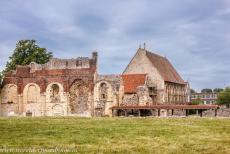
The north wall of the Norman nave of St. Augustine's Abbey in Canterbury in the English county of Kent. The abbey was a Benedictine monastery, but later also a royal palace and a royal burial ground. Nowadays, only the imposing ruins remain. St. Augustine's Abbey is marking the rebirth of Christianity in Southern England.
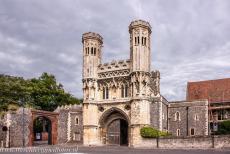
The Great Gate of St. Augustine's Abbey in Canterbury, the gatehouse was built between 1297-1309. The gate is also known as Fyndon's Gate, named after Abbott Fyndon. The chamber above the gatehouse was the state bedchamber of the abbey, King Charles I of England and Henrietta Maria of France slept in this chamber, following their wedding in Canterbury Cathedral in 1625.
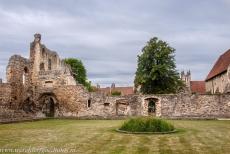
The ruins of the cloisters of St. Augustine's Abbey in Canterbury, the abbey was founded by the monk Augustine in 597. King Ethelbert of Kent allowed Augustine to build the abbey just outside the city walls of Canterbury. The abbey was originally dedicated to the Saints Peter and Paul, but after the death and canonization of its founder, it became known as St. Augustine's Abbey.
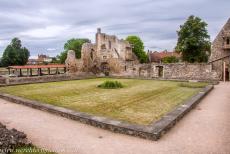
The ruins of the cloister of St. Augustine's Abbey in Canterbury, on the left hand side the roof of the archaeological excavation pit, on the right hand side the foundations of the lavatorium, the washrooms in the abbey. St. Augustine's Abbey was not only built as a monastery, but also built as the burial place for the Anglo-Saxon kings of Kent.
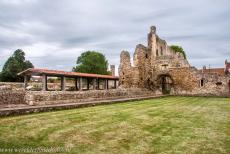
The ruins of the cloisters of St. Augustine's Abbey in Canterbury, on the left hand the protective roof covering the archaeological excavations. The abbey existed for over nine hundred years, it was dissolved in 1538 during the Dissolution of the Monasteries by the English King Henry VIII. Henry VIII converted the abbey into a palace for his fourth wife, Anne of Cleves.
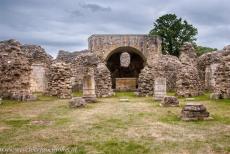
St. Augustine's Abbey, Canterbury: The Norman crypt and the Chapel of St. Mary and the Angels. On the left hand side the Chapel of St. Thomas. Following the Norman Conquest of England by William the Conqueror in 1066, the Anglo-Saxon buildings of the abbey were completely rebuilt in the Romanesque style, and the abbey took the form of a typical Norman Benedictine abbey.
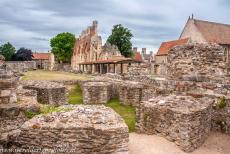
St. Augustine's Abbey in Canterbury: The ruins of Abbot Wulfric's Rotunda, the octagon-shaped structure was built around 1050 to link the Church of St. Peter and St. Paul to the Chapel of St. Mary and the Angels. A Norman choir was built later over the Rotunda. The Church of St. Peter and St. Paul was the main church of St. Augustine's Abbey in Canterbury.
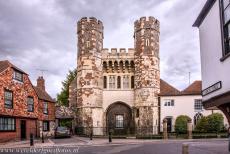
The Cemetery Gate Tower of St. Augustine's Abbey in Canterbury is also known as St. Ethelbert's Gate. The gate was built in the 13th century as the main entrance to the church and churchyard for lay people. Canterbury Cathedral, St Augustine's Abbey and St Martin's Church was inscribed on the UNESCO World Heritage List in 1988.
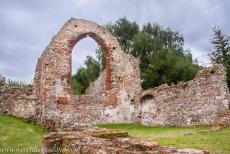
The remains of the Church of St. Pancras in Canterbury, the 7th century church was constructed of Roman brick, one of its surviving columns was made of limestone from a quarry nearby Paris. It was one of the three Anglo-Saxon churches of St. Augustine's Abbey, the Church of St. Pancras was used as a cemetery church. St. Augustine's Abbey is a UNESCO World Heritage.
